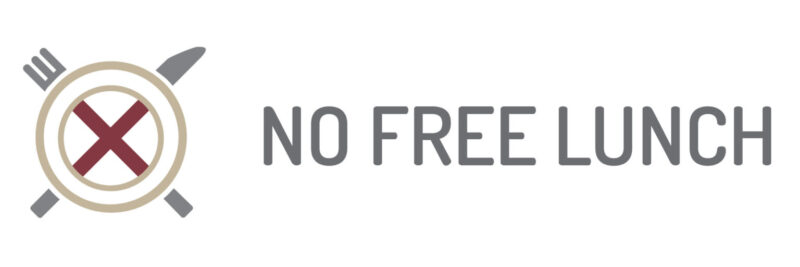It might sound like the ultimate shit post, but we’ve found four examples of how money has literally been made from shit.

For centuries, alchemists like Sir Isaac Newton toiled unsuccessfully trying to turn base metal into gold. They needn’t have bothered if they’d realised that you can literally turn shit into money. If you’re not convinced that there’s money in manure, we have four examples that might change your mind.
The South American guano goldrush
The American gold rushes of the 19th century are famous for the tales of stampeders fuelled by FOMO seeking their fortunes. Though it’s acknowledged that those selling spades made the most money, what’s less known is that the Californian Gold Rush indirectly created fortunes from guano – aka bird shit.
With a shortcut through Central America not an option, boats headed to California from the East of America had to take the long way around.
Given the risks of rounding Cape Horn, the southernmost headland of the Tierra del Fuego and notorious nautical graveyard, boat owners looked for something to justify the return leg other than an empty hold.
The solution was harvesting vast amounts of guano, built up over centuries on untouched islands off Chile and Peru, to sell to the growing commercial farm sector back home and in Europe.
According to Paul Johnson, curator of a 2016 exhibition – The Norie Atlas & the Guano Trade – “[Guano] was two hundred feet deep in some places.”
One of the interesting consequences of the search for rich sources of guano was that it forced specific US legislation that effectively annexed uninhabited islands that weren’t claimed by any other government.
A tangible illustration of the wealth generated by the South American guano trade is Tyntesfield, a hugely impressive stately home and gardens near Bristol that now belongs to the National Trust.
William Gibbs (1790-1875) commissioned the Victorian Gothic Revival House, which he purchased in 1844, then remodelled on a design by John Northon, using the iconic local Bathstone and paid for by the vast profits from the guano trade.

Victorian Pure Finders – Getting paid to pick up dog poop
In Victorian London, a Pure Finder was paid to collect dog excrement by tanneries. The word ‘pure’ is likely a bastardisation of the word ‘puer’, which refers to animal dung used for purifying leather.
Victorian Londoners would refer to dog shit as pure, and therefore those who scavenged for dog mess, Pure Finders.
The detailed knowledge of the practices of Victorian Pure Finders is thanks to the unique work of Henry Mayhew, regarded as one of the first citizen journalists.
According to Mayhew, there were around 200-300 Pure Finders in London around 1850, mostly women earning about 8d to 10d per bucket from the thirty tanyards in Bermondsey, and sometimes more depending on the quality, as it was a specific characteristic of the dog mess, its alkalinity, that was valuable to the end clients.
Pure Finding supported a standard of living not to be sniffed at – about £13 annually – very decent compared to London’s working classes, but considering how Mayhew described the practicalities of collecting the poop, often with bare hands (as gloves were too expensive to clean) the Pure Finders earned every penny.
How your Moroccan leather souvenir relied on pigeon droppings
Visitors to the historic Moroccan city of Fez will likely visit iconic leather tanneries such as Chouara. These tanneries are believed to date back to the 9th century, with the production process largely unchanged and reliant on vast quantities of pigeon shit.
Aerial photos show the tannery as a complex of concrete pits, something like a terraced beehive. Animal hides are first dumped into these pits containing cow urine, salt and water to loosen the fur, sinew and fat from the animal skin and make them more malleable.
About three days later, the process gets even more agricultural, as the hides are then placed in vats containing pigeon shit. The ammonia content softens the hides, enabling the dye, applied further down the production line, to be more easily absorbed.
Though the use of pigeon dung in leather production, known as bating, sounds like an interesting piece of trivia, the subject has a serious side.
The tanning process also requires large quantities of chromium, a known carcinogen, with these old-school tanneries often dumping their waste liquid straight into the Fez River.
Tanneries like Chouara are a key element of Morocco’s tourist industry; in fact, they probably wouldn’t exist, but for Western tourists paying over the odds for leather bags, boots and saddles.
The modern leather industry in Morocco, focused on the wholesale export market, follows more stringent industry standards. So the next time someone shows off a plush and shiny leather souvenir from Fez that cost mega-bucks, you’ll know that it was made thanks to pigeon shit.
Turning shit into art
There are no defined criteria for what qualifies as art; it simply comes down to perception. Several artists have pushed that envelope to the extreme by making art out of their shit and convincing collectors to pay good money for it.
Piero Manzoni, an eccentric Italian artist, created ninety numbered cans described as Artist’s Shit; the content being exactly what it said on the tin, the excrement of artists that Manzoni procured.
Artist’s Shit, contents 30gr net freshly preserved, produced and tinned in May 1961
The label on cans of Artist’s Shit by Piero Manzoni
It isn’t known how many of the collection was sold, but according to the Tate, who bought tin number 004, a letter from Manzoni written in 1961 attests to one sale for 30 grams of 18-carat gold, which is $1,500 in today’s money.
Where alchemists have failed down the centuries to turn base metals into gold, Manzoni managed the feat using shit. Funnily enough, the item isn’t currently on display at the Tate. One can only wonder what Manzoni would have made of NFTs.
Manzoni isn’t alone in turning skat into art. In 2015, Grafitti artist Katsu produced a portrait of Mark Zuckerberg using their own faeces. The portrayal of Zuckerberg in the movie ‘The Social Network’ was far from flattering, but Katsu’s statement piece suggests Facebook’s founder belongs in the sewer. How much Katsu made from their Zuckerturd isn’t known.
No Free Lunch
There is no such thing as a free lunch, but if you’re hungry to find out why, we’re here to help.
You can learn the meaning and origin of the no free lunch concept, as well as the broader philosophy behind the idea that nothing can ever be regarded as free.
We look at our relationship with money and truth, examining all of the supposed shortcuts, life hacks and get-rich-quick schemes.
